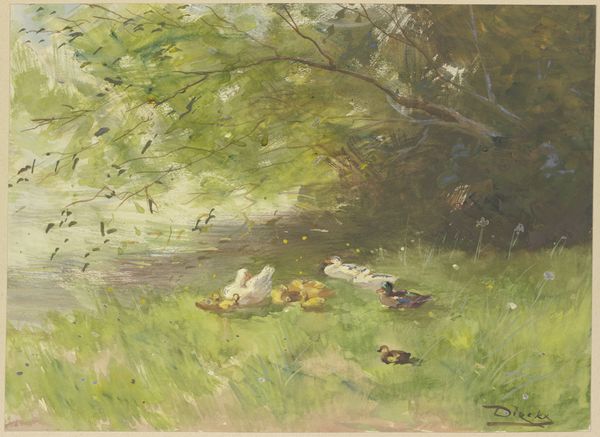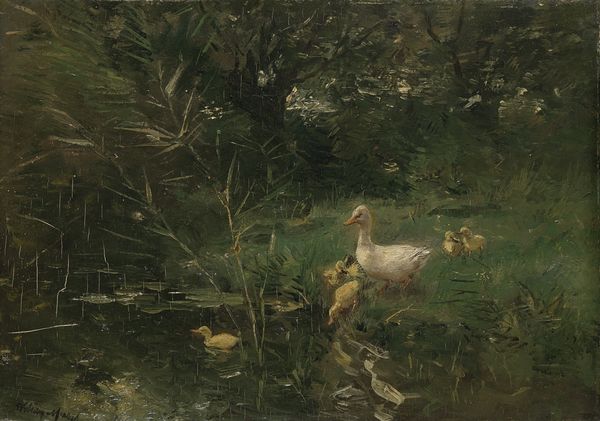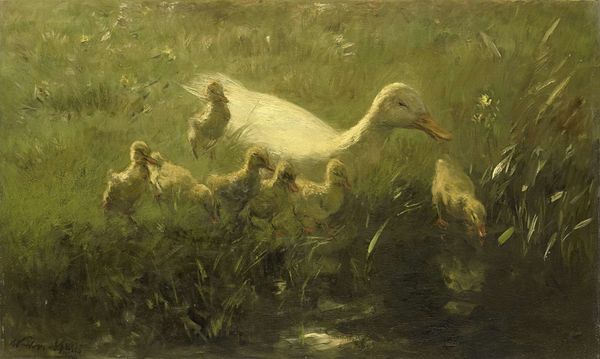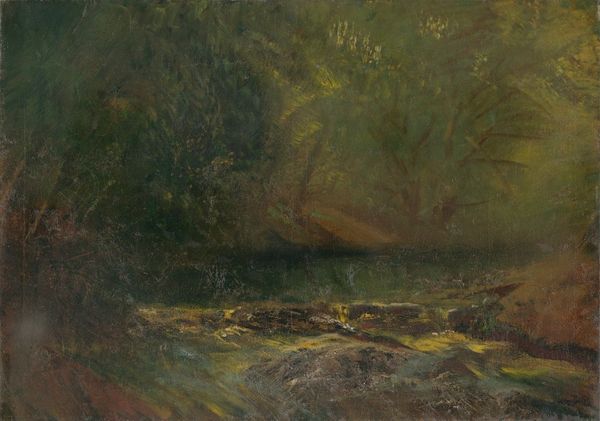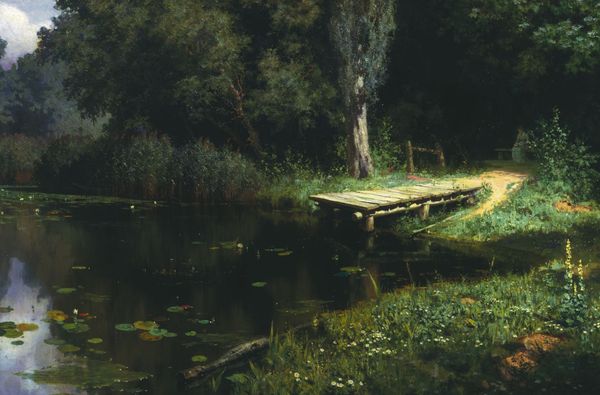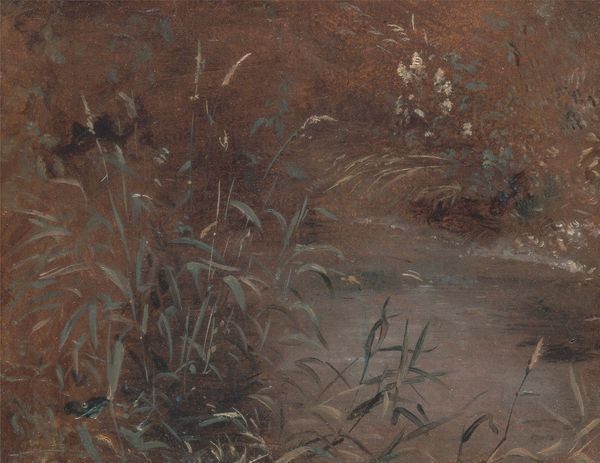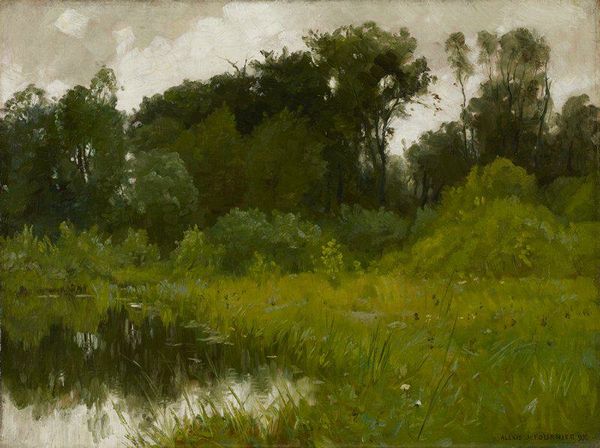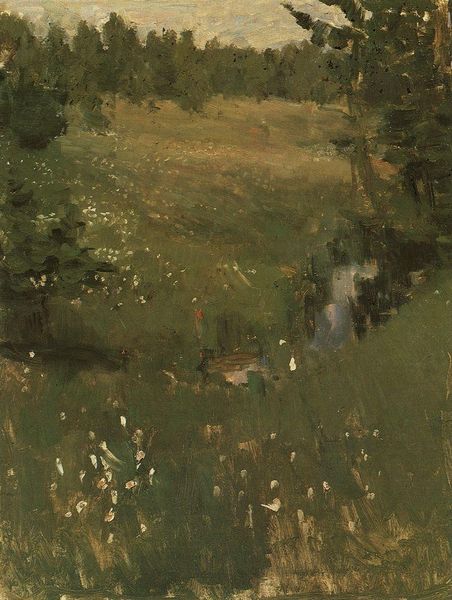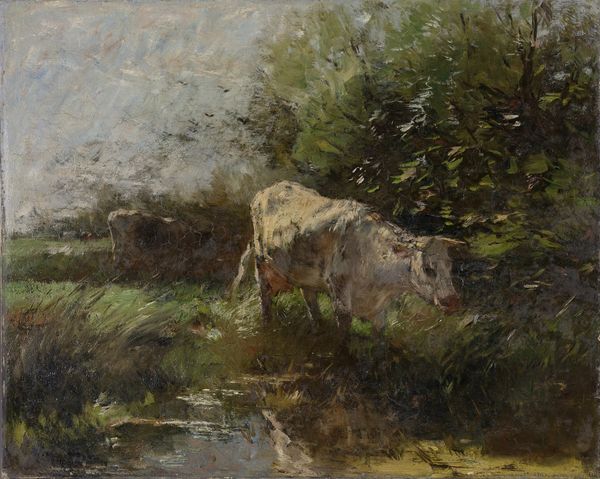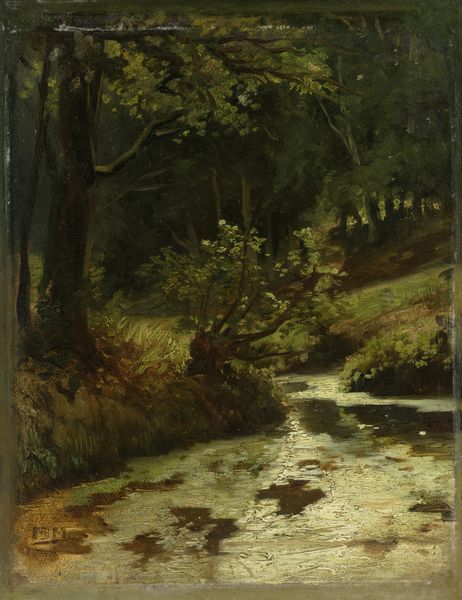
Dimensions: height 93 cm, width 113 cm, depth 14.5 cm
Copyright: Rijks Museum: Open Domain
Willem Maris painted "Eenden", or "Ducks", with oil on canvas during the late 19th century. It’s a naturalistic scene of ducks resting by a pond in the Netherlands. Maris belonged to the Hague School, a group of Dutch artists who turned away from the rigid academic style of the time and instead embraced the Barbizon School’s focus on landscapes and everyday life. The Hague School sought to represent the Dutch landscape in a realistic and atmospheric way. Their style captured the mood and light of the Dutch countryside. What’s interesting is the social context. At a time of rapid industrialization, these artists deliberately chose to focus on rural scenes, perhaps as a way of idealizing a simpler way of life. Maris, in particular, was known for his paintings of animals and water, reflecting a deep appreciation for the natural world. By studying the institutional history of art and the cultural values of the time, we can understand the social conditions that shaped artistic production and the public role of art in society.
Comments
No comments
Be the first to comment and join the conversation on the ultimate creative platform.
